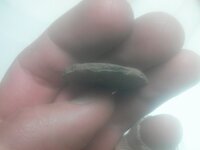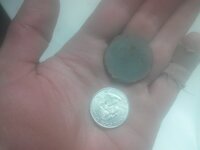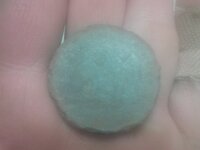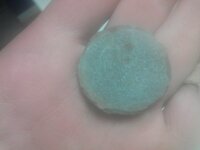vadigger89
Full Member
I need help from you coin guys out there. Ok I found this coin today it is in pretty rough shape cant make out to much on it. I think its 1841 I know it is 184? not real sure about the last number. The edges are really corroded which seems a bit strange to me, because it should be 90% silver and 10% copper. You can see more detail actually looking at it than in the pictures. There are also a few more strange things about this coin it does not shine like silver and it only weighs 8.7 grams it should weigh 13.36 grams.
Attachments
Upvote
7










